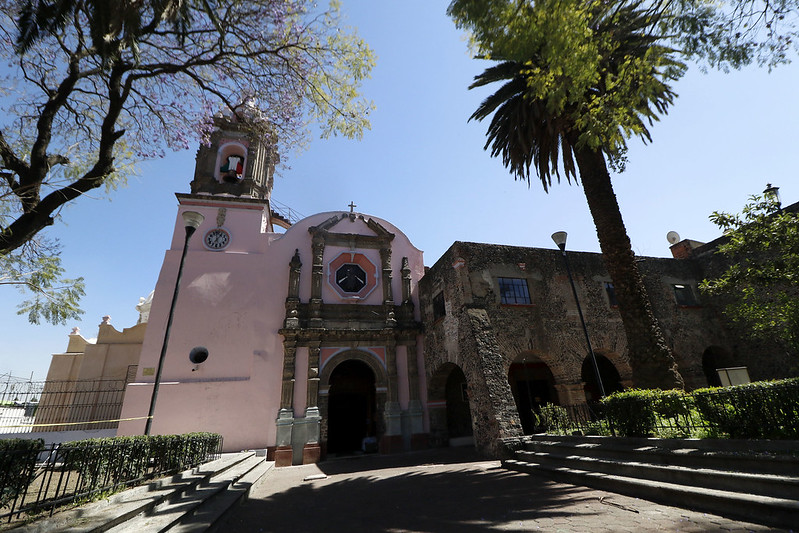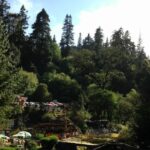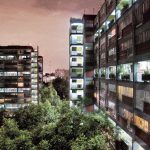
_
The San Matias Church is at the center of the old island city of Iztacalco. It was originally divided into seven neighborhoods of which La Asunción was the most important. Today with some eight designated historical buildings, it’s a good introduction to the east side of the city, and a dynamic under-visited neighborhood.
A famous legend tells how St. Matthias the Apostle became patron of the monastery and thus of what is today the entire alcaldia. When the temple was being built, the presumed patron was to be San Joaquin. But a canal boat approaching on the canal met a fierce storm of wind and hail, forcing those on board to stop at the only partially built temple. They asked the priest for permission to come in with the icon they were carrying of St. Matthias the apostle. The priest welcomed them gladly. When the storm passed, those in possession of the icon found that they couldn’t carry it out. It had grown so heavy that even with the help of the priest it was not to be budged. This is how the tale is related by Francisco Cázares, the Chronicler of Iztacalco.
The San Matías Church and Monastery were begun in the 16th century and remodeled some 200 years later. The facade is delineated in quarried stone. A single bell tower bears a later clock and was built in the 18th century. A side chapel, to the Immaculate Conception, dates from the same time. That one has a Greek cross plan, an octagonal dome and a lantern, again with delineated windows.
The main temple has a single nave, a barrel vaulted roof, a sunken eight-sided choir window, and a striking scalloped cupola. The baptistry dates from the 16th century also in quarried stone carved with Franciscan symbols. The cover of the baptismal font is made of wood and dates to the 19th century. A sculpture of San Matías within the main altarpiece dates from the 18th century. Inside the sacristy, a 16th century sculpture Christ stands out for the craftsmanship. The organ is from the 19th century.
The church was renovated by the architect José Miguel de Rivera Saravia in 1725. The appearance of the facade has been pretty much consistent since that time and the church is noted as a forerunner of the Churrigueresque style that was to developed as the 18th century proceeded.
The neighborhood surrounding the monastery and the Plaza San Matías has the look and feel of a village, even one in a much smaller pueblito. Sometimes called the Plaza Miguel Hidalgo it’s the center of the Barrio de la Asunción, and many will say it’s the most important in Iztacalco. The space is uneven, and the trees still provide adequate shade such that it can be enjoyed even at the height of the afternoon. The traditional neighborhood kiosk in the center. Nearby are both the pre-Hispanic glyph of Iztacalco and the bust of Miguel Hidalgo actually unveiled by President Juarez in 1870.
It’s a very good place from which to begin a tour of the seven other original pueblos of Iztacalco, all within easy walking distance. On the corner of the plaza are both the historical portales commercial building, from the 19th century. The famous Iztacalco market is in the other direction on the same block.
 5556339663
5556339663

0.16 kms.

0.20 kms.

0.75 kms.

One of Mexico City's most spectacular skylines, it's a National Park and a tremendous spectacle.

Giant housing for the giant see, it's still one of the most successful public housing complexes ever.

Just a few steps outside the south exits of the Mercado de Sonora...

A neighborhood market on the cusp of several neighborhoods.